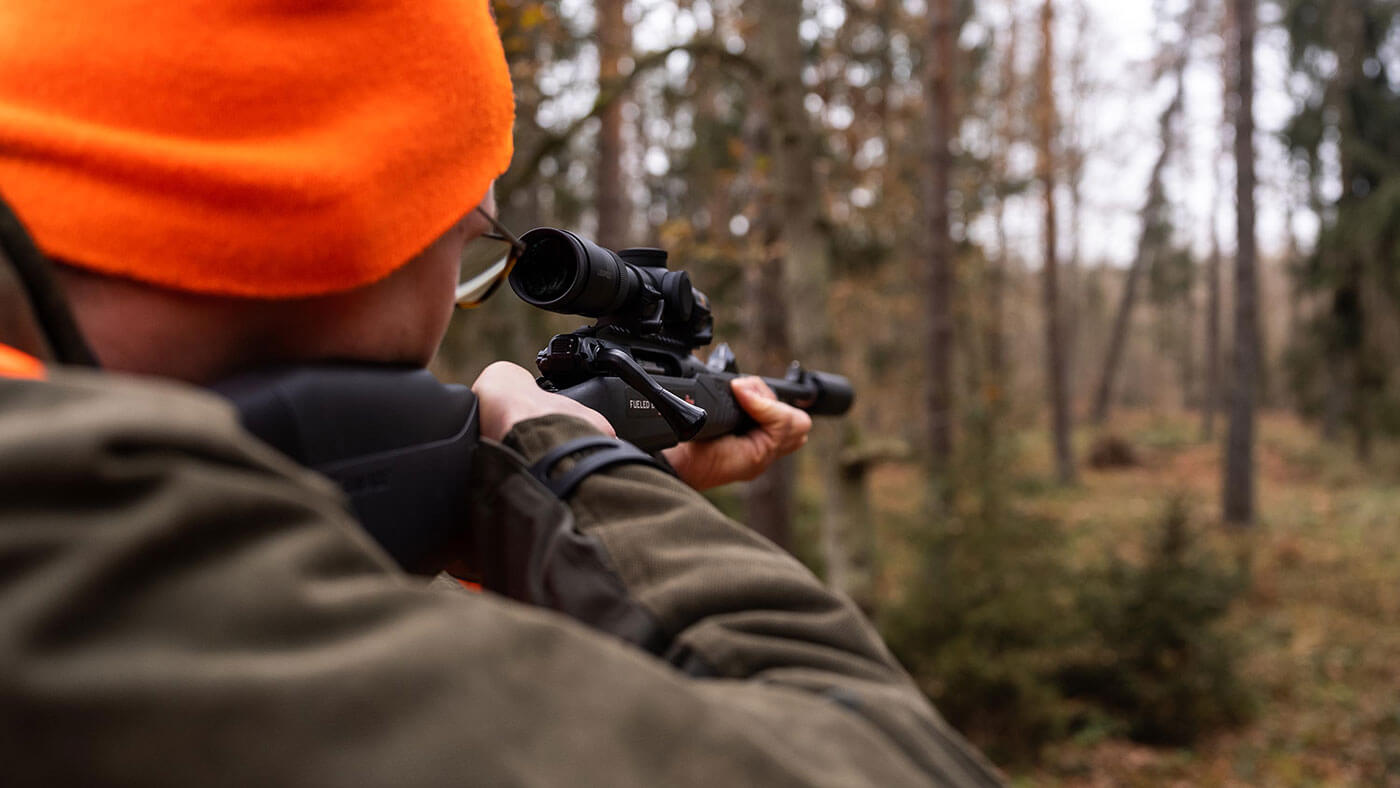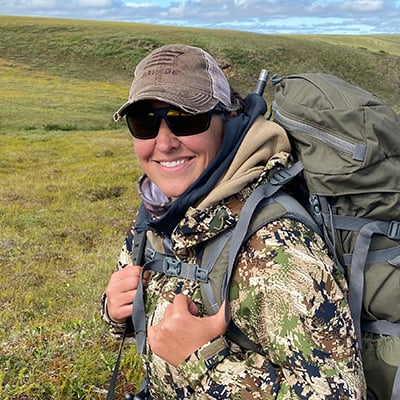- Savage Blog
- What is a Driven Hunt?
What is a Driven Hunt?

Stepping off the plane into Berlin, the adventure of my first driven hunt was about to begin. It was cold and wet in Germany during the first week of December. We are here to test a new rifle, and this hunting set-up is exactly what the rifle was built for. We are introducing the Impulse Driven Hunter.

At the range, we put 3-5 rounds through the new rifles, confirm our zeros, and make sure we feel comfortable behind the gear. Once all of us are confident with the gear and rifle operation, we head over to the running board range. Roughly 50 yards down range, there is a large boar on a track that runs back and forth at varying speeds. There is a monitor directly above the shooter that shows where we hit on the pass of the boar. Each shooter was required to prove that they can confidently and ethically harvest the game. In addition to the lengthy process to obtain a hunting license in Germany, having to prove that you can safely handle firearms, and more importantly, take successful shots at the game are crucial in driven hunting.

What is a driven hunt?
In a lot of countries in Europe, there lacks public land for hunting purposes. Obtaining a license to hunt takes months if not years. Earning the privilege to hunt often comes down to who you know. Landowners in most countries in Europe are required by law to not only manage their land, but the wildlife on that land. This is where driven hunts coming to play. Family and friends gather for a day or two each year on landowners’ properties. Each hunter has a stand they are placed in. They are responsible for hunting the area that surrounds that stand. Then other hunt party members known as beaters, and often their dogs, circle the land to push the game towards the hunters. Things happen fast. Precise shots are demanded. And safety for all involved is of the utmost importance. Most shots are no further than 50-100 yards and areas where you cannot shoot are clearly marked.

Many Americans likely have never experienced a driven hunt. At least not in the way that a group of us did last December. This hunt is built around community, chaos, and ceremony.
Community
Before we all head out to our stands in the morning, all hunters gather. It is amazing to see the volume of people in one place, all for the common purpose. And to know that these people do this all over Europe. They help each other, they work for the neighbors to be able to provide for their own families. Normally driven hunts consist of 20-30 hunters. There are specific rules on what type and age of game can be harvested during each hunt. We were instructed each night on what the next day would entail. Shooting times, game/species on the hunt list, groups assigned and more. Everyone at the hunt knows their role in helping not only the landowner but making sure that the game that is left on the land can flourish and have enough from the land to sustain the population. The community also benefits from the hunt. This is how they fill their freezers and feed their families. At the end of the hunt, all hunters are seen tagging the animals harvested that they would take home and process.
Chaos
Anyone who has hunted long enough knows that the moment of taking that one shot, and that one trophy is exhilarating, nerve wracking, and like no other feeling we can experience. The feeling of being in a stand in forest, game all around you, and not knowing what will run out brings its own challenges. The woods become alive with the sounds of dogs barking as they jump up game, the beaters yelping and hollering to try and push game towards the hunters. And when you see something moving towards you, it is almost always at a full sprint. We had the opportunity to hunt fallow deer, roe deer, wild boar, fox, rabbit, and red stag. Sounds great right? Well, we were only allowed to hunt certain gender and age of each species. In a split second, hunters must identify the species, and then quickly decide if it fits within the criteria the landowner is allowed to harvest during the hunt.
Now that you have the species identified, your shooting skills get tested. One can practice shooting at a running boar, but nothing compares to deer or boar darting between trees and turning on a dime. Learning to hunt in North America, my shot taking was focused taking shots at animals who are not moving, and normally standing broadside to me. As deer the size of dogs and small boar are darting through the woods in front of our stands, that all goes out the window. Decisive, confident shots are required. The first morning of the hunt I only had two wild boars run by my stand. I was too slow to decide which one to follow, and how to navigate taking a shot between the trees. So, my Impulse Driven Hunter rifle stayed silent that first day. This is not a place to throw bullets down range and hope you hit something. Hunters on these types of hunts normally take one shot for every animal harvested. The precision is quite impressive after seeing how difficult the scenarios are on the driven hunt. Just like any other hunt, we aim to preserve as much meat as possible on our game. And that leads us to the final theme of our hunt.
Ceremony
The driven hunt ends at a very specific time. All rifles are unloaded, and hunters recover their animals, drag them to the roadside, and begin to work their way to the gathering ground. A large bonfire has been started, coffee and other beverages are served, along with a chowder or stew.

Cars and trucks are backing in and dropping off the game that was harvested that morning. Every person who played a role as a hunter or beater now assumes another role. Everyone jumps in to dress the animals. There are butchers on site, making sure that no piece of the animals goes to waste.

The landowners have set out pine branches into a large area on the grounds. As animals are dressed and cleaned, they are placed, by species, on the branches. After all animals are placed, all members of the event take their places around the square of branches. The hosts stand at the top of the square. To their left are the horn players. Next come the beaters, across from the hosts. Finally, the hunters round out the fourth side of the square.

To begin, the horns play a distinct song kicking off the ceremony. The hosts welcome and thank everyone for their participation of the hunt. The hosts honor each group and give thanks for the game harvested. Each species is then recognized with a unique song played by the horns. As the game is honored, every hunter who harvested that species is asked to come forward and receive a small branch to place in their cap.

This shows to others that this hunter is very skillful and had a successful morning. This process continues for each species of game laid out in front of us. This morning, we have 5 different species to honor.

At the end of the ceremony, the participants claim their game from the branches and head home to process and preserve their meat. Another successful day for everyone involved. The landowners maintain the balance that their land and the wildlife need. Family and friends gather to hunt and celebrate. And everyone returns home with sustenance for their families.
This style of driven hunting goes back centuries in Europe. Rarely would we encounter this style of hunting in the US, so to be able to not only observe this, but be a part of it, and successfully harvest a roe deer made this hunt one that will not soon be forgotten.



